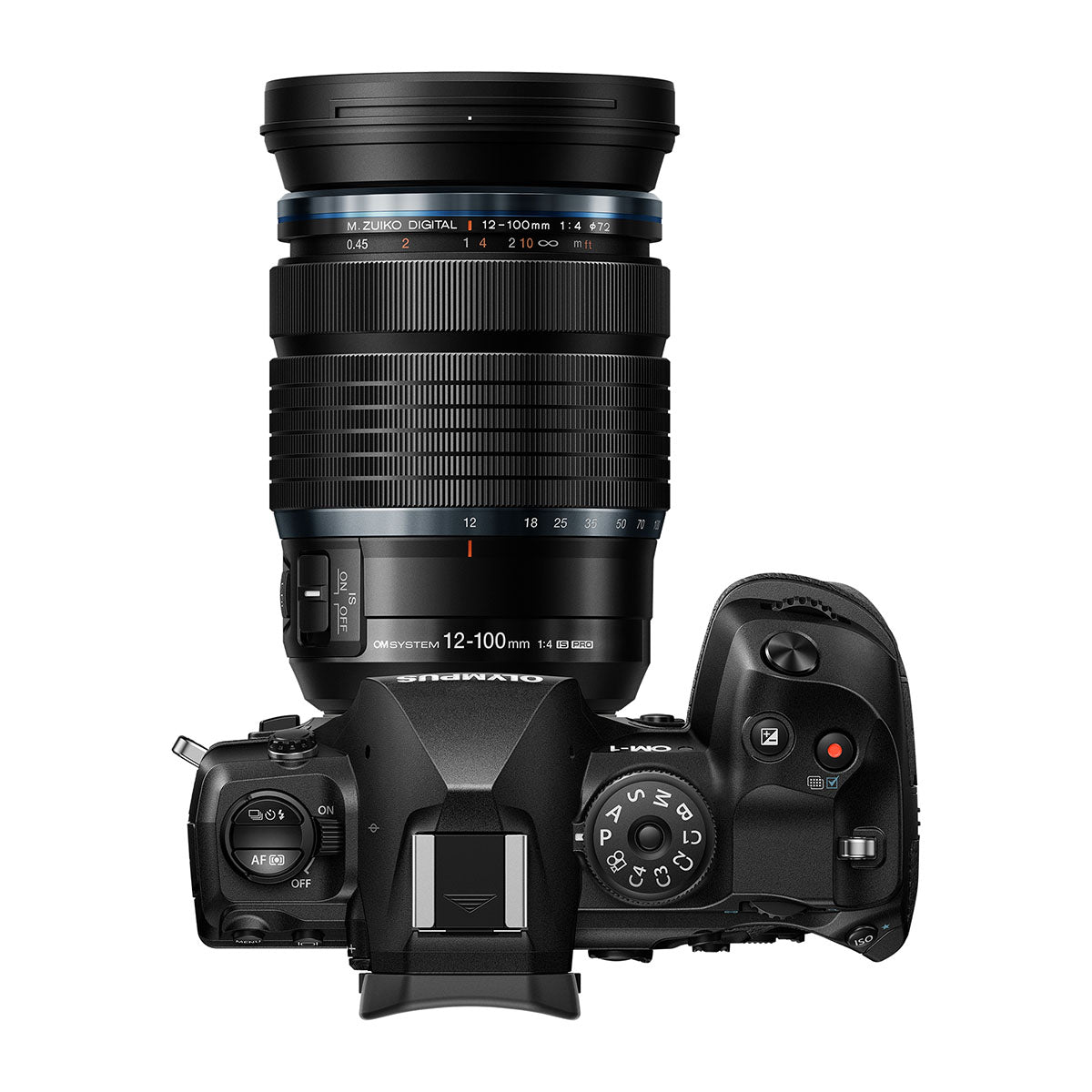What we think...
OM SYSTEM Winter Cashback Promotion 2025

Discover the perfect opportunity to upgrade your photography gear with exclusive cashback offers across a wide range of OM SYSTEM cameras and lenses. Whether you’re stepping into the OM SYSTEM ecosystem for the first time or expanding your current setup, this limited-time promotion makes it easier than ever to invest in premium quality and performance.
Enjoy peace of mind with a 5-Year Total Warranty on all featured products — ensuring lasting protection and confidence in every shot. From lightweight mirrorless cameras to professional-grade lenses, the comprehensive OM SYSTEM lineup has something for every creator, adventurer, and storyteller.
Claim your cashback, enjoy extended warranty coverage, and capture more with OM SYSTEM.
Product Description
OM System M.Zuiko DIGITAL ED 12-100mm F4.0 IS PRO Lens
M.Zuiko ED 12-100mm f4.0 IS PRO at a Glance
Discover unparalleled versatility with the M. Zuiko Digital ED 12-100mm f4.0 IS PRO lens. As the only professional high magnification zoom lens covering a 35mm equivalent 24-200mm focal range, this Micro Four Thirds lens is engineered for exceptional optical performance. With premium construction and superior glass, it delivers razor-sharp images, enhanced by the world's most powerful image stabilization system, the 5-Axis Sync IS. This weatherproof, fast-focusing lens offers effortless control and is perfect for portraits, wide-angle shots, landscapes, and macro photography. One lens. Unmatched versatility.

Key Features
- F4.0 Aperture: Maintain consistent brightness with a constant f4.0 aperture.
- 24-200mm Focal Length: 35mm equivalent focal length offers extensive reach.
- 0.6x - 0.42x Magnification: Achieve exceptional close-ups with 35mm equivalent max. image magnification.

High Performance
M.Zuiko PRO Lenses
M.Zuiko PRO lenses are designed for top-tier performance, boasting fast apertures and robust weathersealed construction.

Powerful Image Stabilization
The 12-100mm f4.0 IS PRO features in-lens image stabilization, providing up to 5 shutter speed steps of compensation, ensuring clear, sharp images even in challenging conditions.

Weathersealed Durability
Pair this lens with a weatherproof OM-D body to capture every moment without worrying about your equipment. Dust, splash, and freezeproof construction make it an ideal companion for any adventure.

Micro Shooting Capabilities
Capture subjects both near and far with the 12-100mm f4.0 PRO's minimum working distance of just 15 cm, allowing for stunning macro photography.

Travel Light with Heavy Performance
Professional photographers can now travel light while enjoying exceptional zoom performance with the Olympus M.ZUIKO DIGITAL ED 12-100mm 1:4.0 IS PRO. Covering a focal length range equivalent to 24-200mm in 35mm terms, this 8.3x zoom lens combines quality that once required multiple lenses. The Sync IS system delivers up to 6.5 EV steps compensation when used with a matching camera model, ensuring stable, clear shots. Its lightweight, compact design makes it an ideal travel companion, ready to perform in any environment.

Down to the Finest Detail
Achieve breathtaking close-ups with the M.ZUIKO DIGITAL ED 12-100mm 1:4.0 IS PRO. A minimum working distance of just 1.5cm allows for capturing the finest details and extreme wide-angle shots with ease.

Unprecedented Image Quality
The constant 1:4.0 aperture and 5-axis Sync IS system provide up to 6.5 EV steps of stabilization, delivering exceptional image quality. The lens' Z Coating Nano significantly reduces flaring, and its fast, high-precision AF system ensures clarity and definition for both still and moving subjects. Photographers will appreciate the customizable L-Fn button for quick access to specific functions and the focus clutch feature for smooth and fast manual focusing.

Elevate your photography with the OM System 12-100mm F4.0 IS PRO M.ZUIKO DIGITAL ED Lens. Whether you're capturing landscapes, portraits, or macro shots, this versatile, professional-grade lens is designed to deliver exceptional performance in any setting.
Payment & Security
Your payment information is processed securely. We do not store credit card details nor have access to your credit card information.




















